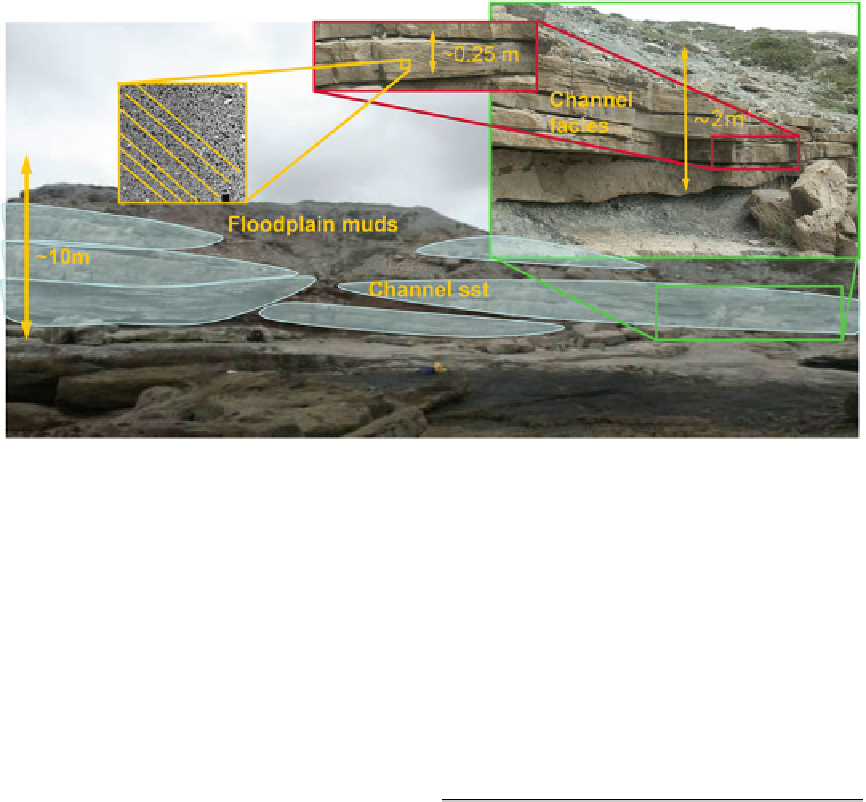Geoscience Reference
In-Depth Information
Fig. 6.15
Hierarchy of
sedimentary structures
in fluvial channel
system (Lourinha Formation, Portugal)
(Photo K. Nordahl/Statoil
#
Statoil ASA, reproduced with permission)
However, as the sinuosity and dispersion in
channel orientation reduces, 3D channel systems
begin to behave like 2D systems, with the rapid
change in connectivity occurring at around 60 %
sand fraction - close to the theoretical value of
66.7 %.
This wide range in reservoir connectivity for
fluvial channel models highlights the need
for careful model design based on good
characterisation of the fluvial depositional sys-
tem at hand. There is no point in making an
attractive-looking fluvial reservoir model if it
'misses the target' with regard to the likely sand-
stone connectivity.
but the effective permeability of a generic
channel - the 'channel REV' - can be quantified
into a larger-scale model, field-scale if necessary.
Keogh et al. (
2007
) give a good review of the use
of probabilistic geological modelling methods
for building geologically-realistic multi-scale
models of fluvial reservoirs.
6.3
Tidal Deltaic Sandstone
Reservoirs
6.3.1 Tidal Characteristics
Tidal deltaic reservoir systems have earned a
special focus in reservoir studies, because
although they represent only one class of deltaic
systems they present special challenges. Delta
systems can be fluvial-, wave- or tidal-
dominated. In terms of reservoir modelling
fluvial-dominated or wave-dominated delta
systems could generally be handled using similar
modelling approaches to those used for fluvial
and shallow marine settings (discussed elsewhere
in this chapter). However, the influence of tidal
processes tends to result in highly heterolithic
6.2.4 Hierarchy
Figure
6.15
illustrates the multi-scale nature of
fluvial channels - the 'channel' is composed of
several sandstones bodies, and each sandstone
has variable lithofacies types (typically trough
cross-bedded and ripple-laminated sandstones).
Although challenging, these multiple scales
lend themselves well to a multi-scale modelling
approach - the detail within each channel
cannot practically be modelled field-wide,


